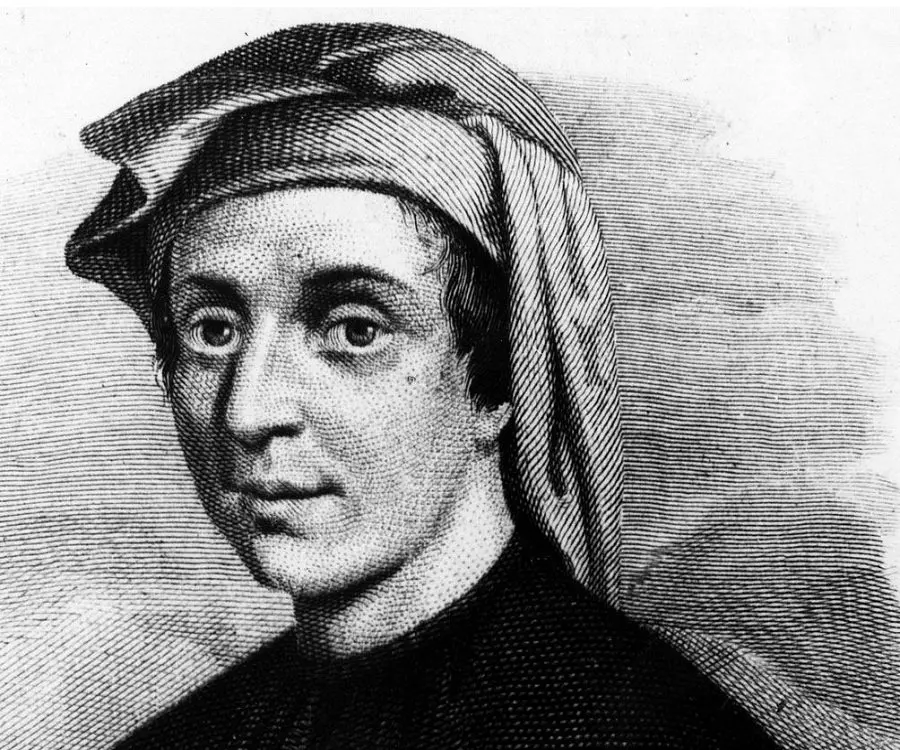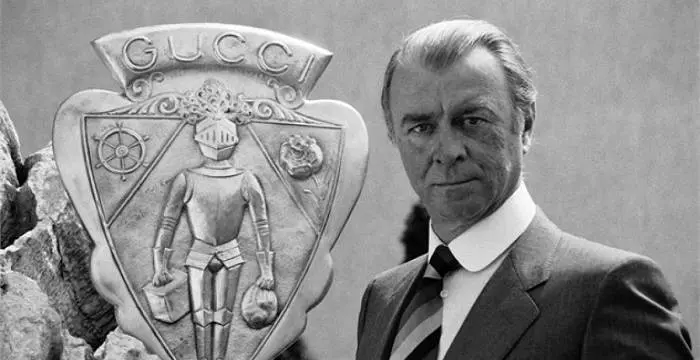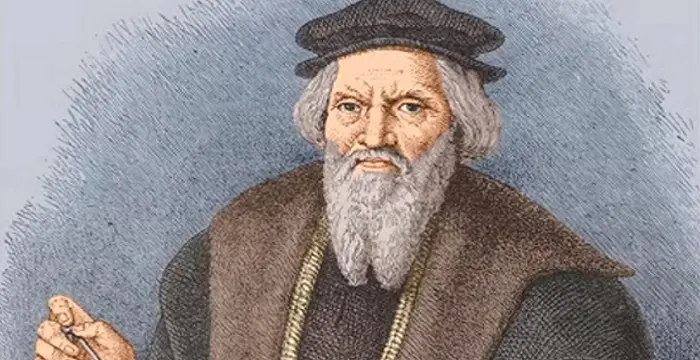
Leonardo Fibonacci - Scientists, Family and Childhood
Leonardo Fibonacci's Personal Details
Leonardo Fibonacci was a 13th century Italian mathematician
| Information | Detail |
|---|---|
| Birthday | 1170 |
| Nationality | Italian |
| Famous | Scientists, Mathematicians |
| Known as | Fibonacci |
| Birth Place | Pisa |
| Religion | Catholicism |
| Gender | Male |
| Father | Guglielmo Bonacci |
| Born in | Pisa |
| Famous as | Mathematician |
// Famous Mathematicians
Grigori Perelman
Grigori Perelman is a Russian mathematician who is best known for his contributions to Riemannian geometry and geometric topology. Check out this biography to know about his childhood, family life, achievements and fun facts about him.
Terence Tao
Terence Tao is an Australian- American mathematician who has contributed enormously to the field of mathematics. Check out this biography to know about his childhood, family life and achievements.
Isaac Newton
Isaac Newton was an English scientist and mathematician, who discovered gravitation and Newtonian Mechanics. Read this biography to find more on his life.
Leonardo Fibonacci's photo
Who is Leonardo Fibonacci?
Leonardo Bonacci, better known as Fibonacci, was a 13th century Italian mathematician counted amongst the greatest mathematicians ever to have existed. He is credited to be "the most talented Western mathematician of the Middle Ages". He made many significant contributions to mathematics and popularized the Hindu-Arabic numeral system to the Western World. He gave a detailed account of the Hindu-Arabic numeral system in his book the ‘Liber Abaci’ (Book of Abacus or Book of Calculation) and also gave to Europe the sequence of Fibonacci numbers. Born to a prosperous merchant, the young Fibonacci travelled widely with his father and received the opportunity to study the numeral systems in countries around the Mediterranean coast. He was fascinated by the ten symbols of the Hindu-Arabic numeral system and was determined to introduce the system in Europe. Back in Italy after his travels, he published ‘Liber Abaci’ which became a very popular work on mathematics. Emperor Frederick II was much impressed by the mathematician’s work and encouraged him in his intellectual pursuits. With royal support, Fibonacci received the opportunity to correspond with other contemporary mathematicians and collaborate with them in mathematical enquiries. There are many mathematical concepts named after Fibonacci but his work in number theory was almost wholly ignored during the Middle Ages.
// Famous Scientists
Juliane Koepcke
Juliane Koepcke is a German-Peruvian biologist, who was the lone survivor among the 92 passengers and crew of the ill-fated LANSA Flight 508 that crashed in the Peruvian rainforest on 24 December 1971. Know more about her life in this biography.
Henry Cavendish
Henry Cavendish was a theoretical chemist and physicist, renowned for discovery of hydrogen and calculation of the mass of earth. To know more about his childhood, profile, timeline and career read on
Konstantin Tsiolkovsky
Konstantin Tsiolkovsky was a Russian rocket scientist and a pioneer of astronautics. This biography provides detailed information about his childhood, family, personal life, career, achievements, etc.
Childhood & Early Life
The exact date of Fibonacci’s birth is not known. It is believed he was born sometime around 1170–75 in Pisa. His father Guglielmo Bonacci was a wealthy Italian merchant who directed a trading post in North Africa. According to some sources, his father also served as the consul for Pisa.
As a young boy, Fibonacci travelled extensively with his father. He was primarily educated in Bejaia, a Mediterranean port in northeastern Algeria where his father was posted. He studied mathematics with an Arab master.
Continuing his travels, he visited Egypt, Syria, Greece, Sicily, and Provence. His travels gave him the opportunity to interact with merchants belonging to diverse cultures and he discussed the different methods of calculation with them. He was very much intrigued by the unique numerical systems adopted in different regions of the world.
Later Years
Fibonacci was particularly fascinated by the ten symbols of the Hindu-Arabic numeral system—1, 2, 3, 4, 5, 6, 7, 8, 9 and most importantly, a symbol for zero 0. At that time Roman numerals were used in Europe for performing arithmetic calculations. This method was not an easy one and had several limitations.
The young mathematician was eager to introduce the Hindu-Arabic numerical system in Europe. Upon his return to Pisa around the year 1200, he wrote a number of texts on mathematics which played an important role in reviving ancient mathematical skills. He also produced several works drawing upon his own experiences and knowledge.
In 1202, he completed ‘Liber Abaci’ which was among the first Western books to describe Hindu-Arabic numbers traditionally described as "Arabic Numerals". At that time, Hindu-Arabic numerals were known to only a few European intellectuals through translations of the writings of the 9th century Arab mathematician al-Khwārizmī. Fibonacci helped to popularize the concept in the European world. His work gained fame quickly, and soon many copies of the work were made.
The Holy Roman emperor Frederick II who had a keen interest in science and mathematics came to know of Fibonacci through scholars at his court who had corresponded with Fibonacci. These scholars included Michael Scotus, Theodorus Physicus, and Dominicus Hispanus.
The emperor interacted with Fibonacci and the mathematician corresponded with Frederick and his scholars for several years. He collaborated with the scholars to work on mathematical problems, and presented the solutions to problems posed by Johannes of Palermo, in his work ‘Flos’ (1225). He dedicated his ‘Liber quadratorum’ (Book of Square Numbers) to Frederick.
Major Works
Fibonacci is best known for his ‘Liber Abaci’, in which he popularized the system of the Hindu–Arabic numerals to the Western world. He advocated the use of the ten symbols—1, 2, 3, 4, 5, 6, 7, 8, 9, and 0—and showed how the system could be implemented for practical purposes like commercial bookkeeping and calculation of interest. The book profoundly impacted European thought.
In this work ‘Practica Geometriae’, he examined the techniques used in surveying and the measurement and partition of areas and volumes among other topics in practical geometry.
His book on algebra, ‘Liber quadratorum’ (Book of Square Numbers) examined several topics in number theory and gave an inductive method for finding Pythagorean triples. This work had a major influence on later mathematicians like Fermat and Euler.
Personal Life & Legacy
Little is known of Fibonacci’s personal life. It is not known whether he was married or not.
He was known by several names including Leonardo of Pisa, Leonardo Pisano Bigollo, and Leonardo Fibonacci.
The details regarding his death are also obscure. It is generally believed he died around 1240–50.
The Fibonacci sequence is named after him. The sequence of numbers, in which each number is the sum of the previous two numbers, was introduced by Fibonacci to Western European mathematics. Many other mathematical concepts, like Brahmagupta–Fibonacci identity and the Fibonacci search technique are also named after him.
// Famous Italian peoples
Pietro Boselli
Pietro Boselli is an Italian model, engineer, teacher, and fitness athlete who became famous as the ‘world’s sexiest math teacher’. Check out this biography to know about his birthday, childhood, family life, achievements and fun facts about him.
Guccio Gucci
Guccio Gucci was a famous fashion designer from Florence, Italy, and the founder of the world-renowned fashion brand ‘Gucci.’ Check out this biography to know about his childhood, family, personal life, career, etc.
John Cabot
John Cabot was an Italian navigator and explorer who was the first European to discover the coast of North America. Check out this biography to know about his childhood, life, and achievements.
Leonardo Fibonacci biography timelines
- // 1170The exact date of Fibonacci’s birth is not known. It is believed he was born sometime around 1170–75 in Pisa. His father Guglielmo Bonacci was a wealthy Italian merchant who directed a trading post in North Africa. According to some sources, his father also served as the consul for Pisa.
- // 1200The young mathematician was eager to introduce the Hindu-Arabic numerical system in Europe. Upon his return to Pisa around the year 1200, he wrote a number of texts on mathematics which played an important role in reviving ancient mathematical skills. He also produced several works drawing upon his own experiences and knowledge.
- // 1202In 1202, he completed ‘Liber Abaci’ which was among the first Western books to describe Hindu-Arabic numbers traditionally described as "Arabic Numerals". At that time, Hindu-Arabic numerals were known to only a few European intellectuals through translations of the writings of the 9th century Arab mathematician al-Khwārizmī. Fibonacci helped to popularize the concept in the European world. His work gained fame quickly, and soon many copies of the work were made.
- // 1225The emperor interacted with Fibonacci and the mathematician corresponded with Frederick and his scholars for several years. He collaborated with the scholars to work on mathematical problems, and presented the solutions to problems posed by Johannes of Palermo, in his work ‘Flos’ (1225). He dedicated his ‘Liber quadratorum’ (Book of Square Numbers) to Frederick.
- // 1240The details regarding his death are also obscure. It is generally believed he died around 1240–50.
Leonardo Fibonacci's FAQ
Where was Leonardo Fibonacci died?
Leonardo Fibonacci was died in Pisa
Where is Leonardo Fibonacci's birth place?
Leonardo Fibonacci was born in Pisa
What is Leonardo Fibonacci nationalities?
Leonardo Fibonacci's nationalities is Italian
What is Leonardo Fibonacci's religion?
Leonardo Fibonacci's religion is Catholicism
Who is Leonardo Fibonacci's father?
Leonardo Fibonacci's father is Guglielmo Bonacci
How famous is Leonardo Fibonacci?
Leonardo Fibonacci is famouse as Mathematician











